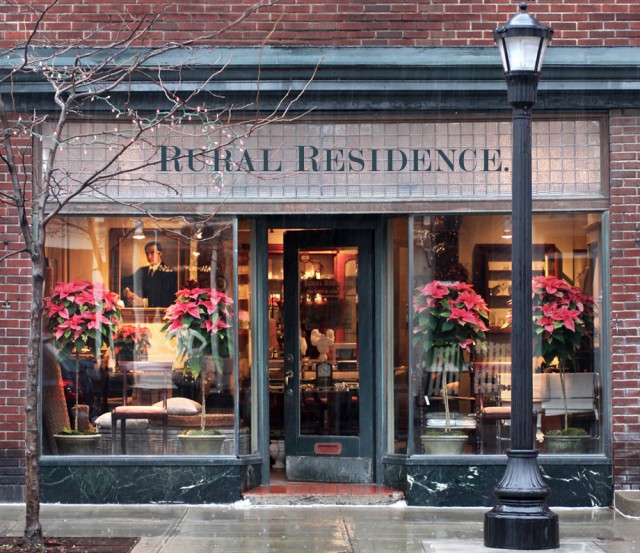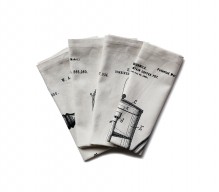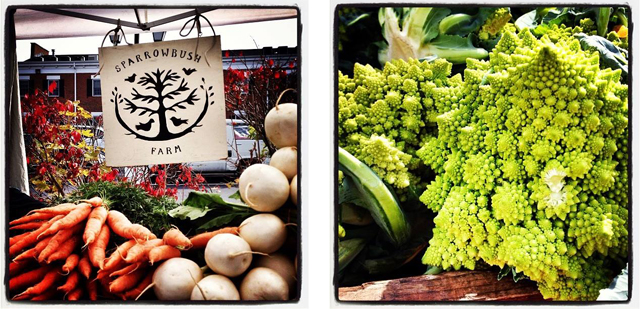Walking the streets of Hudson, it might seem strange that this river town 100 miles away from the open ocean is graced with the images of so many whales. You’ll see them on hotel and street signs, shop windows, banners, even on the city seal. But Hudson owes its name—and really it’s very existence—to the 60 years it was on the map as a busy whaling port.
During the Revolutionary War, the British Navy cracked down on the thriving ports located on the northeast coast, virtually shutting them down by attacking and destroying whaling and shipping fleets. For their business to survive, many merchants relocated to Canada or France and some even returned to England, choosing commerce over the Constitution. A group of sea-faring Quakers from Nantucket and Providence got together and decided to look for a safer place to set up shop closer by. Enter Claverack Landing, a tiny Dutch settlement founded in 1783 on the Hudson River. At the time, Claverack was equipped with two deep bays, land suitable for a port and nearby farmland. The group, calling themselves The Proprietors, bought up huge areas of land and drew up a grid for the town they would rename Hudson in honor of the river and its first western explorer, Henry Hudson who sailed the Halve Maen upriver in 1609.
The city of Hudson was one of America’s first planned cities… they built it and they did come. Ship-builders, sail- and rope- makers, and a host of other shipping related businesses sprung up and soon populated the meticulously drawn out streets. The whaling fleets grew and by 1790 the population hit 2,500. By 1820 it had doubled again. When kerosene replaced whale oil and trains replaced ships, Hudson fell into decline. The last whaling ship sailed from Hudson in 1840, but soon enough trade by railroad brought new businesses to Hudson; tanneries, brickyards, ironworks, cotton mills and breweries flourished. The 1920s and ‘30s saw a rise in gambling and bootlegging and St. Agatha (a statue of the patron saint of virgins looks down the Hudson from its perch on Parade Hill) notwithstanding, Hudson became known for its red light district. A state police crackdown in 1950 brought that underworld economy to an end and the city of Hudson entered another period of neglect and decline.
Throughout all the commercial boom and bust of the past two centuries, Hudson, continued to line its streets with a succession of American architectural styles from the New England Federal style the Quakers brought with them, to Greek and Gothic Revivals, Queen Anne, Colonial Revival and Jacobean. For this reason, Hudson is known as a “dictionary of American architectural styles.” A silver lining to the decades Hudson was under-appreciated. In the first decades of the 21st century, Hudson is proving its resilience with yet another economic revival. The main business thoroughfare, Warren Street, stretches two miles from the riverside promenade to Prospect Avenue and is now lined with an eclectic selection of galleries, antique shops, bookstores, restaurants and music venues. On nearby streets, 19th century hotels have been restored, factories have been converted into performance spaces and former blacksmith shops into restaurants featuring seasonal regional cuisine.
Visiting Hudson today you could close your eyes and forget you are in the middle of a mostly rural county; the city captures the thriving urban feel of a hundred years ago. True to its origins as a busy port trading in both locally made and exotic goods, you can shop the farmers market for fresh ginger stalks and Osage oranges, curried sauerkraut and hand cut potato chips, and honey from nearby apiaries. Or you can visit a nearby shop and buy teas imported from China or luxurious fabrics printed in India. There is a wonderful blend of preserving the past, honoring old traditions in new ways, and innovation born of respect for history and Hudson’s beautiful natural surroundings.
No one understands this better than Tim Dunleavy, storeowner and the founding president of the preservation society, Historic Hudson, which has been instrumental in leading the quest to preserve many of Hudson’s architectural gems. Dunleavy notes that part of what saved Hudson was that it was relatively untouched by the economic “development” of the 1970s. Dunleavy first visited Hudson in 1990 and was surprised to find a fairly intact 19th century city with an impressive abundance of architectural styles. At the time, most of the shops along Warren Street were boarded up. “The storefronts that weren’t empty had been rented or purchased by antique dealers.” Dunleavy recognized this as a sign of nascent economic revitalization. “A similar thing happened in Connecticut in the 1970s when so many antique dealers opened businesses on Route 7.”
Dunleavy opened Rural Residence in 1999. The store is filled with a beautifully curated selection of antiques, art books, linens, toiletries and decorative items; “anything that I have an emotional response to that has a dash of historicism or sense of time,” says Dunleavy. In addition to its interesting architecture, Dunleavy thinks Hudson’s intimate size and walkability have been a big draw. “It feels like a convergence center for the creative class and like-minded people,” he says. “There are 35 new businesses that have opened this year in Hudson. The new hipster migration from Brooklyn has given the city a new youthful energy and appearance.”

Store front of the Rural Residence in Hudson, NY
On their brand new website, Rural Residence draws inspiration from the valley, acknowledging that the Hudson was a river that shaped a nation and “pollinated [it] with a never-before-seen hybrid of nature, cultivated beauty and democratic ideals.” The city of Hudson, can most certainly be seen as a jewel in that crown.
Rather than taking their business elsewhere, two hundred years ago a small group of merchants decided to stay in their young country and seek out a place to build a peaceful and thriving city. I like to think of them surveying the land and envisioning a community of builders, farmers, bakers and craftspeople all taking pride in their work and engaged in the wonderful business of life. I like to think that if they visited Hudson today, they would be proud.
Experience Hudson:
- Musica — a community music shop.
- Fern — handcrafted furniture.
- Look — apparel and accessories.
- Discipline Park — hand picked designer clothes and vintage.
- Gris — antiques and interior design.
- Hudson City Books — used and rare bookstore.
Taste Hudson:
- Fish and Game — weekly changing menu located in a converted historic blacksmith shop.
- Grazin’ — farm-to-table diner.
- Swoon Kitchenbar — brasserie.
- Verdigris Tea — tea and chocolate bar.
Creative Hudson:
- Basilica — reclaimed 19th century factory converted into an art, performance, production and event space.
- The Spotty Dog — independent bookstore and lounge/café.
- Helsinki Hudson — Two performance spaces, a full service restaurant, a gallery space and outdoor dining.
Bring a bit of the Hudson Valley into your home with these locally made products:
 |
 |
 |
| Scullery Soap | Black Patriot Head |
Photo Credit: Lisa Kelsey
Lisa Kelsey is a Dutchess County, NY-based art director. Her radio shows “Stirring the Pot” on home cooking, and “Spice: The Final Frontier” on herbs and spices, can be heard on Pawling Public radio. pawlingpublicradio.org



